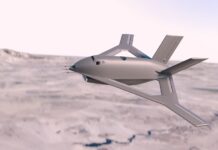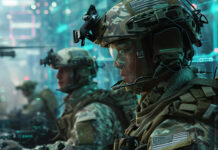Unlike laser guided munitions, which share a mutual electro-optical signal to coordinate the sensor and shooter, GPS guided weapons require precise target coordinated, which must be extracted through manual process, from aerial photos, maps and other sources, verified for accuracy, to eliminate potential collateral damage or risk to friendly forces. Such process is prone to calculation errors which could cost human lives. A computerized process which will transform live imagery into geospatial coordinates, interpreted by ‘coordinate seeking weapons’ (GPS guided, such as JDAM), could have a dramatic effect on the way such weapons are used, especially under limited visibility conditions, when the use of laser guided weapons is limited. Current ‘sensor to shooter’ systems are designed to pursue time critical targets within 10 minutes from detection, as semi-automatic processes enable to prioritize the most critical imagery, assisting target extraction and communications to the platform, enabling target prosecution within 3 minutes or less from detection.
This cycle requires the targeting process to operate in near-real-time rates, lasting less then three minutes. However, typical target life in asymmetric warfare is much shorter than that. One of the systems playing a key role in improving those rates is the Currently an Advanced Concept Technology Demonstration (ACTD) development Gridlock will provide position data, accurate to within 10 meters and shorten the time elapsing from sensor detection to weapon launch, to less than sixty seconds. Gridlock replaces current time-consuming manual imagery registration with an automated machine-to-machine process, embedding geopositioning data in each pixel. The system will transmit actionable information to a display in the field showing accurate coordinates and error estimates, by moving a cursor over the image of interest. Gridlock will then export selected coordinates into targeting tools. This technique will minimize the need for training and improve sensor-to-shooter response time.
Gridlock focuses on three ISR platforms used by the Air Force: the Predator, Global Hawk and the piloted U-2. The Air Force is expected to transition the technology to operational systems following conclusion development and demonstrations conducted through 2006.
Facing similar issues, the Israelis have pursued such solutions for heir targeting tasks. Few years ago, RAFAEL unveiled the Golden-Bay real-time imagery processing system. The system provides real-time, high throughput and high accuracy processing of reconnaissance imagery, yielding a dramatic increase in accurate target generation rate. The original system was housed in a field deployable shelter, yet keeping pace with computing technology, it can now be positioned much closer to the ‘sensor to shooter’ cycle, embedded into smaller processors and payload control systems, pursuing faster Time Critical Targeting paces.
Read additional parts of this article:
- Smart Weapons for UAVs
- Weaponized UAVs
- Smart Weapons for UAVs
- Evolution of UAV Employed Missiles
- Lightweight Weapons for Autonomous Platforms
- Gravity Dropped Munitions for UAVs
- Targeting at the pixel
- Loitering Autonomous Weapons
- Grouping in Constellations
- Empowered by the Swarm
- Weaponizing Unmanned Combat Helicopters












